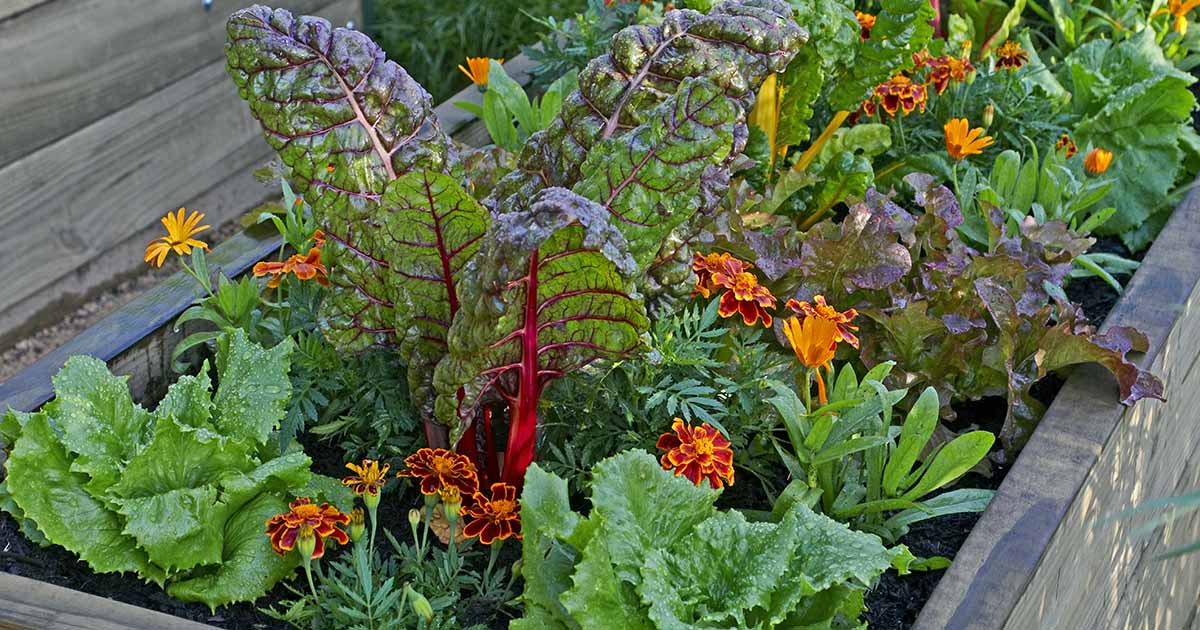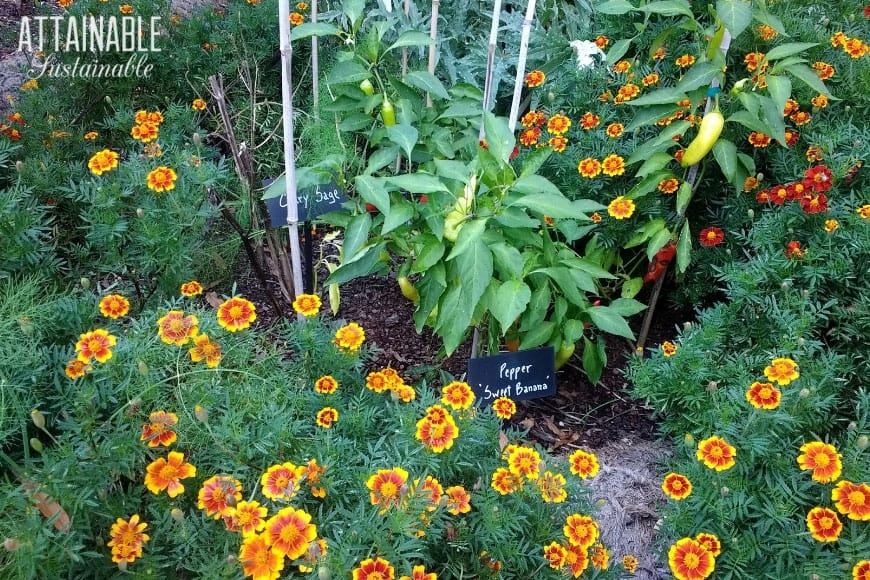Lavender: The Perfect Companion Plant For Your Vegetable Garden
Lavender: The Perfect Companion Plant for Your Vegetable Garden
Lavender is a beautiful and fragrant herb that has been used for centuries for its medicinal and culinary properties. But did you know that lavender can also be a great companion plant for your vegetable garden?
That's right, lavender can help to repel pests, attract beneficial insects, and improve the overall health of your vegetable plants. In this blog post, we will discuss the benefits of companion planting with lavender, and provide some tips on how to get started.
Benefits of Companion Planting with Lavender
There are many benefits to companion planting with lavender. Here are a few of the most notable:
- Repels pests. Lavender has a strong scent that can deter pests such as aphids, cabbage moths, and spider mites. This can help to protect your vegetable plants from damage and reduce the need for pesticides.
- Attracts beneficial insects. Lavender is a magnet for beneficial insects such as bees, butterflies, and ladybugs. These insects help to pollinate your vegetable plants and control pests.
- Improves soil health. Lavender helps to improve the drainage and aeration of soil, which can benefit the roots of your vegetable plants. It also releases essential oils that can suppress the growth of harmful soil bacteria.
- Enhances flavor. The scent of lavender can also enhance the flavor of vegetables grown nearby. For example, lavender can be planted near tomatoes to improve their sweetness.
How to Companion Plant with Lavender
To companion plant with lavender, simply choose the right companion plants and plant them near each other. Some good companion plants for lavender include:
- Tomatoes. Lavender can help to repel pests that damage tomatoes, such as whiteflies and spider mites. It can also attract bees, which help to pollinate tomatoes.
- Peppers. Like tomatoes, peppers can benefit from the insect-repelling properties of lavender. Additionally, lavender can help to attract bees, which are important for pepper production.
- Squash. Lavender can help to repel squash bugs, which are a common pest that can damage squash plants. Additionally, lavender can help to attract bees, which help to promote healthy squash production.
- Cabbage. Lavender can help to repel cabbage moths, which are a common pest that can damage cabbage plants. Additionally, lavender can help to attract bees, which help to promote healthy cabbage production.
- Herbs. Lavender can be planted near other herbs, such as rosemary, thyme, and oregano. These herbs have similar growing requirements and can benefit from each other's company.
Tips for Companion Planting with Lavender
Here are a few tips for companion planting with lavender:
- Choose the right location. Lavender prefers full sun and well-drained soil.
- Plant lavender at the right time. Lavender should be planted in the spring or fall.
- Space lavender plants properly. Lavender plants should be spaced 12 to 18 inches apart.
- Water lavender regularly. Lavender needs regular watering, especially during the first year after planting.
- Fertilize lavender occasionally. Lavender does not need to be fertilized often, but a light application of fertilizer in the spring can help to promote growth.
Conclusion
Lavender is a beautiful and versatile herb that can be used in many ways. It is also a great companion plant for vegetable gardens. By companion planting with lavender, you can help to protect your vegetable plants from pests, attract beneficial insects, and improve the overall health of your garden.
Lavender is a beautiful and fragrant herb that can be grown in many different types of gardens. It's also a great companion plant for vegetables, as it can help to repel pests and attract beneficial insects.
If you're looking to add lavender to your vegetable garden, there are a few things you'll need to keep in mind. First, lavender prefers full sun and well-drained soil. Second, it's important to space lavender plants about 12 to 18 inches apart.
Once you've planted your lavender, you can start thinking about which vegetables to plant alongside it. Some good companion plants for lavender include tomatoes, peppers, cabbage, and green beans. These vegetables all benefit from the insect-repelling properties of lavender, and they can also help to improve the overall health of your garden.
For more information about lavender companion plants for vegetables, I recommend visiting Garden Wiki. This website has a comprehensive list of companion plants, as well as tips on how to plant and care for lavender in your garden.
FAQ of lavender companion plants vegetables
5 Most Frequently Asked Questions About Lavender Companion Plants Vegetables
Question 1: What are the benefits of companion planting lavender with vegetables?
Answer: Lavender is a great companion plant for vegetables because it can help to deter pests, attract pollinators, and improve the overall health of your garden. The strong scent of lavender can repel pests such as aphids, cabbage moths, and spider mites. It can also attract pollinators such as bees and butterflies, which are essential for pollination. Additionally, lavender can help to improve the drainage and aeration of the soil, which can benefit the growth of your vegetables.
Question 2: What vegetables grow best with lavender?
Answer: Some of the best vegetables to grow with lavender include:
- Chamomile: Chamomile is a flowering plant that is related to lavender. It has a similar scent and can help to deter pests.
- Lettuce: Lettuce is a leafy vegetable that is a good source of vitamins and minerals. It can benefit from the shade provided by lavender plants.
- Brassicas: Brassicas are a group of vegetables that includes broccoli, cabbage, and cauliflower. They can benefit from the insect-repelling properties of lavender.
- Onions: Onions are a good source of sulfur, which can help to improve the flavor of lavender.
- Tomatoes: Tomatoes are a popular vegetable that can benefit from the pest-repelling properties of lavender.
Question 3: How far apart should lavender and vegetables be planted?
Answer: The distance between lavender and vegetables will vary depending on the size of the plants. However, as a general rule of thumb, you should plant lavender at least 18 inches away from vegetables. This will give the plants enough space to grow and thrive.
Question 4: What are some other good companion plants for vegetables?
Answer: Some other good companion plants for vegetables include:
- Marigolds: Marigolds are a flowering plant that can help to repel pests such as nematodes and whiteflies.
- Basil: Basil is a herb that can help to improve the flavor of tomatoes and other vegetables.
- Thyme: Thyme is a herb that can help to repel pests such as ants and mosquitoes.
- Rosemary: Rosemary is a herb that can help to improve the flavor of vegetables such as potatoes and carrots.
- Sage: Sage is a herb that can help to repel pests such as cabbage moths and spider mites.
Question 5: What are some mistakes to avoid when companion planting lavender with vegetables?
Answer: Some mistakes to avoid when companion planting lavender with vegetables include:
- Planting lavender too close to vegetables: As mentioned above, you should plant lavender at least 18 inches away from vegetables.
- Planting lavender in the shade: Lavender prefers full sun, so you should avoid planting it in the shade.
- Overwatering lavender: Lavender is drought-tolerant, so you should avoid overwatering it.
Image of lavender companion plants vegetables
- Image 1: Lavender and tomatoes. Lavender helps to repel tomato hornworms, and tomatoes provide shade for lavender during hot weather.

- Image 2: Lavender and lettuce. Lavender helps to repel pests that can damage lettuce, and lettuce provides nitrogen for lavender.

- Image 3: Lavender and carrots. Lavender helps to repel carrot flies, and carrots help to improve the drainage around lavender plants.

- Image 4: Lavender and beans. Lavender helps to repel aphids, which can damage beans, and beans help to improve the soil around lavender plants.

- Image 5: Lavender and marigolds. Marigolds help to repel pests that can damage lavender, and lavender helps to attract pollinators that benefit marigolds.

Post a Comment for "Lavender: The Perfect Companion Plant For Your Vegetable Garden"